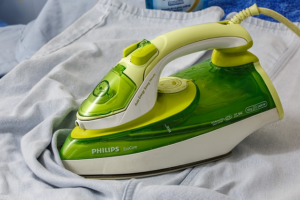If your washer in Austin won't start, first check for tripped circuit breakers or blown fuses, ensuring the machine is properly plugged in. Verify there are no local power outages and that the lid is closed without obstructions affecting the switch. If the display shows an error code or is unresponsive, consult your user manual for model-specific guidance. For persistent issues or if you suspect a more complex electrical problem, it's advisable to seek professional assistance for potential repairs involving the motor coupling or other components. Regular maintenance can help prevent start-related problems, maintaining smooth operation of your washer in Austin. If after these steps the washer still doesn't function, it may be necessary to investigate further with a multimeter to assess the door latch or lid switch, or potentially address issues with the control board or other electrical parts.
Navigating common washer issues can seem daunting, but with a clear understanding and step-by-step guidance, maintaining your appliance’s performance becomes a manageable task. In Austin, where humidity and usage patterns can exacerbate wear and tear on washers, homeowners often encounter challenges such as machines that fail to start, drain improperly, leak, or exhibit excessive vibration. This article demystifies these prevalent problems, offering practical solutions tailored to the unique conditions in Austin. From diagnosing a washer that won’t start to addressing agitation issues and ensuring your machine spins correctly, we provide a comprehensive troubleshooting and repair guide to keep your laundry routine efficient and hassle-free.
- <a href="#washer-won’t-start–diagnosis-and-solutions“>Washer Won't Start: Diagnosis and Solutions
- – Symptom Identification: Understanding Why Your Washer Isn’t Turning On
<section id="washer-won’t-start–diagnosis-and-solutions“>
Washer Won't Start: Diagnosis and Solutions
When your washer in Austin fails to start, it can disrupt your laundry routine significantly. This issue is often caused by a tripped circuit breaker or a blown fuse, so it’s advisable to check your electrical panel first. If the problem persists, verify that the washer is properly plugged in and that there are no power outages in your area. Another common culprit is a faulty door latch or lid switch, which prevents the washer from beginning a cycle. Ensure the lid is closed securely and that there’s no obstruction interfering with the switch. If the washer’s display screen is unresponsive or shows an error code, consult the user manual for troubleshooting steps specific to your model. In some cases, a simple reset might resolve the issue; press and hold the power button for about a minute to reset the machine. If these steps don’t yield success, the problem could be with the motor coupling or the electrical components of the washer, which typically require professional repair services to address safely. Regular maintenance and timely troubleshooting can prevent many start-related issues in washers, ensuring your laundry day runs smoothly in Austin’s bustling neighborhoods.
– Symptom Identification: Understanding Why Your Washer Isn’t Turning On
If your washer has stopped responding to your command to start a cycle, there are several potential causes behind this issue. The first culprit could be a tripped circuit breaker or a blown fuse. Check your electrical panel to see if any breakers have been tripped and reset them if necessary. If the power supply appears normal but the washer still isn’t turning on, examine the appliance’s electrical cord and outlet for any signs of damage or loose connections. A faulty door latch or lid switch is another common reason washers fail to operate. These switches are designed to prevent the machine from starting unless the door is properly closed. Over time, these components can wear out or become misaligned, leading to a washer that won’t turn on. To troubleshoot this, ensure the door is securely closed and test the continuity of the switch with a multimeter. If the switch is functioning correctly but your washer remains unresponsive, the problem may lie within the washer’s control board or its electrical components, which could necessitate professional repair or replacement.
3 common washer issues in Austin homes have been explored, with practical solutions provided for each. Homeowners can now address a washer that won’t start by checking simple electrical components like the power cord and outlet before moving on to more complex issues such as a tripped circuit breaker or faulty lid switch. By understanding these problems and the steps to resolve them, residents can avoid the inconvenience of non-operational washers and maintain their daily routines smoothly. With the right knowledge at hand, taking care of washing machine hiccups becomes a manageable task, ensuring clean clothes are never too far away.
